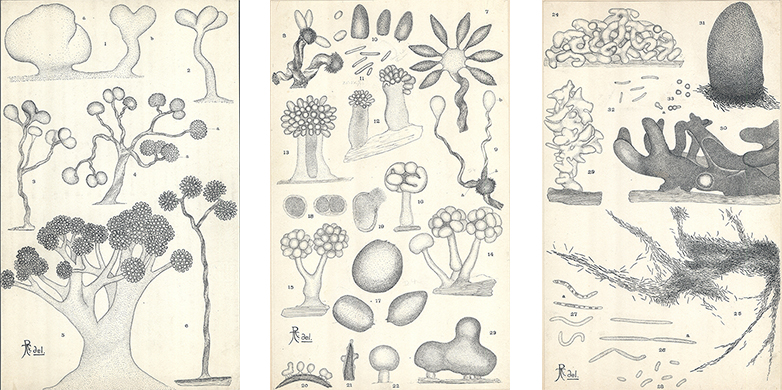The myxobacteria
Swarming collectively on the hunt for other microbes to eat and aggregating to form multicellular fruiting bodies upon starvation, myxobacteria display some of the most complex social behaviors in the microbial world.

The myxobacteria have evolved some of the most sophisticated social behaviors found among microbes and inhabit a diverse range of terrestrial and aquatic habitats. The dozens of myxobacterial species together constitute a monophyletic clade of the Gram-negative delta-proteobacteria.
As predators of many other microorganisms, myxobacteria cooperatively forage for prey, which they kill and degrade with an arsenal of toxic and lytic secretions.
In many species, when food becomes scarce, thousands of cells cooperatively initiate a genetically and behaviorally complex developmental process that culminates in the construction of multicellular fruiting bodies, within which many cells transform into stress-resistant spores.

